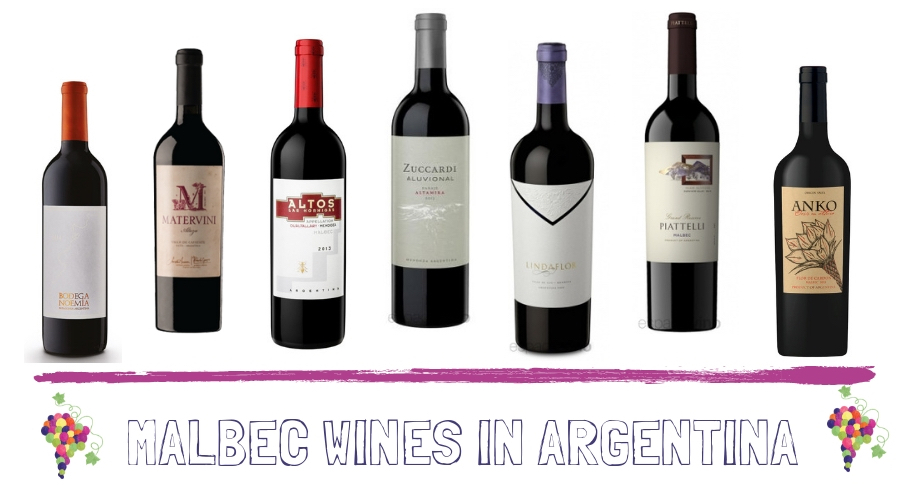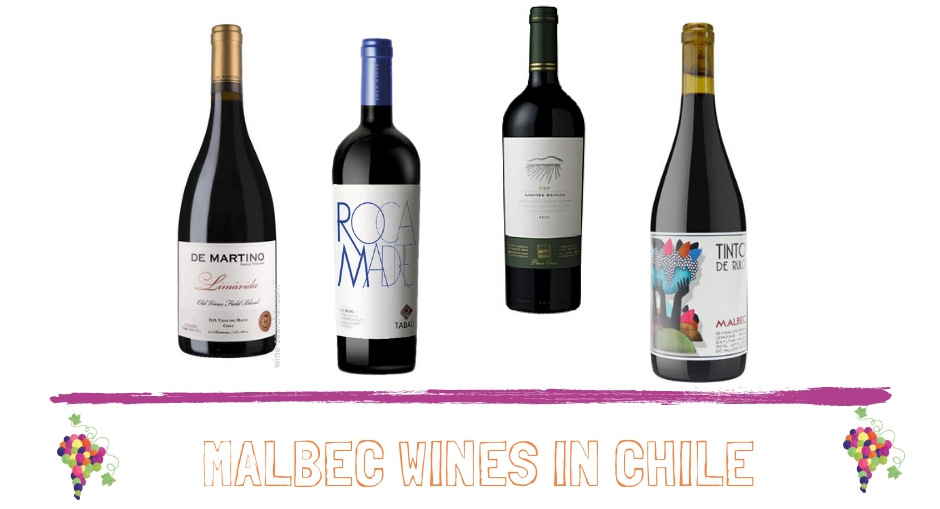A beautifully balanced Pinot Noir from the exceptional Talinay terroir made by emblematic Limarí producer Tabalí. One of the finest examples of Pinot Noir in Chile.
Tabali
Talinay Chardonnay is a superb example of the taut, mineral Chardonnay wines that can be produced in coastal Limarí from renowned producer Viña Tabalí. This is one of the iconic wines of the winery and shows exactly why Limarí Chardonnay is something to get excited about.
Malbec wines for Malbec Day
Malbec is a well-travelled grape and on Malbec World Day you should certainly get out your comfort zone and try some different Malbec wines from around the world. Here’s my pick of a South American selection of Malbec to get you firmly on the Malbec train.
Malbec wines from Argentina
There are no shortage of Malbec wines to try from Argentina and with over 80% of the world’s Malbec, you should try at least a few! Here’s a slimmed down selection of some site-driven Malbecs from single vineyards in different regions that will give you an idea of the many faces of Argentine Malbec.
Malbec icons from different terroirs in Argentina
Malbec wines from Salta
Matervini Alteza Malbec: Floral, spicy and refreshing. One of the many excellent wines in this Malbec terroir series.
ANKO Flor de Cardon: Such a refreshing and stylish Malbec from Salta. Power and finesse.
Piattelli Gran Reserva: Dark, concentrated but fragrant. Best enjoyed at their stunning restaurant in Cafayate.
Malbec wines from the Uco Valley
Altos Las Hormigas Appellation Gualtallary: Red fruit on the nose and spices and mountain herbs underneath. A vibrant expression of Gualtallary by the Altos Las Hormigas union of top winemakers.
Monteviejo Lindaflor: A true icon of Vista Flores in the Uco Valley, this perfumed Malbec is cellar-worthy stuff and is consistently one of the top wines in Argentina. Ideal for a juicy steak.
Zuccardi Aluvional Paraje Altamira: Purple in colour and floral in profile, this is a silky smooth Malbec from Altamira. One of the many superb site-driven Malbecs coming from Zuccardi.
Malbec from Río Negro
Noemia Malbec: Old vine Malbec from organic vineyards in Río Negro. Dark forest fruit, spice and wild herbs. The region is also known for Pinot Noir, but this is the wine that helped put Río Negro on the world stage for top dog Malbec too.
A different style of Malbec from Argentina:
Durigutti Las Compuertas 5 Suelos: Fresh fruit and crunchy, this is a bright Malbec which walks on the lighter side.
Vicentin Blanc de Malbec: White Malbec? Yes. Pressed before it takes much colour, this is a fragrant wine ideal for afternoon sipping.
Doña Paula Rosé of Malbec: There’s a flood of light-coloured, Provence-style rosé wines in Argentina at the moment but few of them are pure Malbec. Doña Paula captures the fruit and freshness of Malbec from its Lujan estate.
Reginato (Sparkling) Rosé of Malbec: The Reginato bros do it again with another excellent bubbly, this cherry-coloured sparkling rosé is filled with notes of strawberries and red fruits. Good value too.
Malbec wines from Chile
Chilean Malbec is so easily underrated, considering the volume and quality coming from its neighbour. However, Chile has a long tradition in Malbec and you’ll find some excellent examples of both old vine Malbec and new Malbec regions in Chile. Here’s my pick for this Malbec day:
De Martino Limavida Malbec: From old vines in Maule, this Malbec (with a bit of a field blend going on) is complex and exciting.
Tinto de Rulo Malbec: Young friends working with old vines in Bío Bío. Fresh, earthy and exceptional value.
Tabali Roca Madre: A new region for Malbec and for Limarí, in the Andes! Volcanic soils at 1,600m. The vines are still young but the wine shows promise of what’s to come – dark, floral and concentrated mountain Malbec.
Perez Cruz Cot: From Maipo Alto, this Malbec (or Cot) is a rich and structured wine that shows the typical cassis and eucalyptus notes so often expressed in the region.
Malbec from Brazil, Uruguay, Bolivia and Peru
You might not think much beyond Argentina or Chile for South American Malbec, but there’s an increasing list of Malbecs worth trying from further afield.
Brazilian Malbec
Don Guerino Terroir Selection Malbec: Young Brazilian winemaker Bruno Motter learnt the ropes of winemaking in Mendoza and has been steadily working on his Malbec in the family winery in Brazil. Terroir Selection is his new top wine of the winery with notes of dark fruit, coffee and tobacco.
Uruguayan Malbec
Gimenez Mendez Malbec: This is a great value Malbec from Uruguay and was even selected for the First Class bar aboard Virgin Atlantic. Black fruit and toasty notes of coffee and pepper.
Bolivian Malbec
Campos de Solana Malbec: High altitude goes hand-in-hand with good Malbec as far as Argentina is concerned, so shouldn’t it be true in Bolivia? There is less Malbec in Bolivia than you might assume but there are a handful of producers working with the variety – including one of the key players in Bolivian wine, Campos de Solana. Jammy black fruit but with a fresher finish.
Peruvian Malbec
Intipalka Malbec: This is probably one of the best-distributed wineries in Peru and so you might just get your hands on this young, fruit-driven Malbec from Intipalka’s Ica vineyard.
Read more on Malbec wines from South America and beyond:
Viña Tabali is a risk-taking winery, planting 180 hectares of vineyards on virgin lands in an area that wasn’t well known for wine before they started in 1993. They hit gold though with chalky soils and cool, coastal conditions that are the key to their stellar Chardonnay, Pinot Noir and Sauvignon Blanc among other varieties including their top-of-the-range Syrah.
Tabali winery and vineyards is in one of the northern-most wine regions in Chile, Limarí, near the Fray Jorge National Reserve, a UNESCO Biosphere Reserve. If you are coming from La Serena, it is a day visit and is open to tourism where you can visit Tabalí winery and cellar and finish with an outdoor tasting overlooking the valley.
About Tabalí Winery
Back in 2002 when Chilean businessman Guillermo Luksic founded Viña Tabalí, he was taking a chance on an area that was largely unexplored in viticultural terms. His instinct paid off and today the Limarí Valley is gaining a reputation as one of Chile’s most exciting wine regions and Tabalí as one of its most emblematic producers.
The company, now led by Guillermo’s son Nicolás, remains largely focussed on the Limarí Valley with vineyards close to the ocean and in the Andean foothills, but in 2013, they also acquired a vineyard in the traditional Maipo Valley to produce high-end Cabernet Sauvignon.
The company has always sought to make quality terroir-focused wines. Nicolás explains, “what we are seeking is to produce high-quality wines that reveal their origin and transport the person tasting them to the soil and climate of Tabalí’s vineyards. That’s what my father always wanted to transmit.”
Tabalí’s winery building is visually quite stunning. Built in a ravine, it is intended to fit into its environment and to echo the way of life of the Molle people who once lived in this area. The stainless steel tanks stand in the open air, protected from the sun by a roof.






